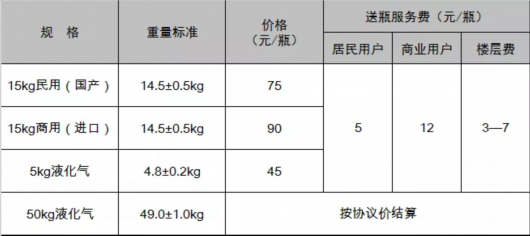const pq = new PriorityQueue()pq.add(1)pq.add(2)pq.add(3)pq.remove() // => 3pq.remove() // => 2pq.remove() // => 1remove ж–№жі•жҜҸж¬ЎеҲ йҷӨзҡ„ж—¶еҖҷйғҪдјҡжҠҠжңҖеӨ§зҡ„е…ғзҙ еҲ йҷӨжҺү пјҢ 并且иҝ”еӣһиў«еҲ йҷӨе…ғзҙ гҖӮиҜ·дҪ е®ҢжҲҗ PriorityQueue зҡ„е®һзҺ° гҖӮ
жңҚеҠЎеҷЁиҝҗиЎҢж—¶й—ҙйҷҗеҲ¶пјҡ20ms гҖӮ
зӯ”жЎҲпјҡ
/* з»Ҹе…ёзҡ„дәҢеҸүе Ҷе®һзҺ°дјҳе…ҲйҳҹеҲ— */class PriorityQueue { constructor () { this.q = [] this.n = 0 } _exch (i, j) { const q = this.q const tmp = q[i] q[i] = q[j] q[j] = tmp } add (item) { this.n += 1 const q = this.q let n = this.n q[n] = item let j = n / 2 | 0 while (j > 0 && q[j] < q[n]) { this._exch(j, n) n = j j = n / 2 | 0 } } remove () { if (this.n === 0) return const q = this.q const item = q[1] this._exch(1, this.n--) q.pop() let n = this.n let j = 1 while (2 * j <= n) { let k = 2 * j if (k < n && q[k] < q[k + 1]) k++ if (q[k] <= q[j]) break this._exch(k, j) j = k } return item }}дә”пјҡ ж•°з»„дёӯзҡ„ж•°жҚ®еҲ’еҲҶе®ҢжҲҗдёҖдёӘеҮҪж•° partition пјҢ е®ғжҺҘеҸ—дёҖдёӘж•°з»„дҪңдёәеҸӮж•° гҖӮе®ғдјҡжҗ¬еҠЁж•°з»„дёӯзҡ„е…ғзҙ пјҢ дҪҝеҫ—жүҖжңүе°ҸдәҺ第дёҖдёӘйЎ№зҡ„е…ғзҙ йғҪжҗ¬еҠЁеҲ°е®ғзҡ„е·Ұиҫ№ пјҢ жүҖжңүеӨ§дәҺ第дёҖдёӘйЎ№зҡ„е…ғзҙ йғҪжҗ¬еҠЁеҲ°еҸіиҫ№ гҖӮдҫӢеҰӮпјҡ
const arr = [3, 1, 6, 2, 4, 5]partition(arr)console.log(arr) // => [2, 1, 3, 6, 4, 5]иҫ“е…Ҙзҡ„ж•°з»„зҡ„第дёҖдёӘйЎ№жҳҜ 3 пјҢ жүҖд»ҘжңҖеҗҺе°ҸдәҺ 3 зҡ„ 1гҖҒ2 зҡ„йғҪеҲ°дәҶе·Ұиҫ№ пјҢ еӨ§дәҺ 3 зҡ„ 4 пјҢ 5 пјҢ 6 йғҪеҲ°дәҶеҸіиҫ№ гҖӮ
иҜ·дҪ еңЁдёҚиғҪдҪҝз”Ёд»»дҪ•ж•°з»„еҺҹз”ҹж–№жі• пјҢ еҸӘиғҪдҪҝз”ЁеҫӘзҺҜе’ҢиөӢеҖјзҡ„жғ…еҶөдёӢе®ҢжҲҗ partition еҮҪж•° гҖӮ
зӯ”жЎҲпјҡ
/* иҝҷйўҳиҖғеҜҹзҡ„е…¶е®һжҳҜеҝ«йҖҹжҺ’еәҸйҮҢйқўзҡ„ж•°жҚ®еҪ’зұ»*/const partition = (arr) => { const exch = (i, j) => { let t = arr[i]; arr[i] = arr[j]; arr[j] = t; } const v = arr[0] let i = 0 let j = arr.length while (true) { while (arr[++i] <= v && i < arr.length); while (arr[--j] >= v && j > 0); if (i >= j) break exch(i, j) } exch(0, j)}е…ӯпјҡж•°з»„дёӯж•°жҚ®еҪ’并жңүдёҖдёӘж•°з»„ пјҢ иҝҷдёӘж•°з»„д»ҺдёӨдёӘең°ж–№ејҖе§ӢеҚҮеәҸ пјҢ дёҖдёӘжҳҜејҖе§Ӣ пјҢ дёҖдёӘжҳҜдёӯй—ҙ гҖӮдҫӢеҰӮпјҡ
[10, 21, 32, 11, 16, 40] // д»Һ 0 е’Ң 3 ејҖе§ӢеҚҮеәҸ[1, 5, 10, 11, 3, 4, 8, 12, 30] // 0 е’Ң 4 ејҖе§ӢеҚҮеәҸиҜ·дҪ е®ҢжҲҗ merge еҮҪж•° пјҢ еҸҜд»ҘжҠҠзұ»дјјдёҠйқўзҡ„ж•°з»„еҸҳжҲҗдёҖдёӘе®Ңе…ЁеҚҮеәҸзҡ„ж•°з»„пјҲзӣҙжҺҘдҝ®ж”№еҺҹжқҘзҡ„ж•°з»„пјү гҖӮдҪ дёҚиғҪз”Ё sort ж–№жі• пјҢ 并且еҸӘиғҪдҪҝз”ЁдёҖж¬ЎеҫӘзҺҜ гҖӮ
зӯ”жЎҲпјҡ
/* иҝҷйўҳе°ұжҳҜиҖғеҪ’并жҺ’еәҸйҮҢйқўзҡ„еҪ’并方法 */const merge = (arr) => { const aux = [...arr] const mid = Math.floor(arr.length / 2) let i = 0 let j = mid for (let k = 0, len = arr.length; k < len; k++) { if (i >= mid) arr[k] = aux[j++] else if (j >= len) arr[k] = aux[i++] else if (aux[i] > aux[j]) arr[k] = aux[j++] else arr[k] = aux[i++] }}
дёғпјҡжңҖй«ҳдә§зҡ„зҢӘжҲ‘们用дёҖдёӘ html з»“жһ„жқҘиЎЁзӨәдёҖеӨҙзҢӘзҡ„еӯҗеӯҗеӯҷеӯҷпјҡ
<div class="pig"> <div class="pig"> <div class="pig"> <div class="pig"></div> </div> <div class="pig"> <div class="pig"></div> </div> <div class="pig"> <div class="pig"></div> </div> </div> <div class="pig"> <div class="pig"></div> <div class="pig"></div> </div> <div class="pig"> <div class="pig"> <div class="pig"></div> <div class="pig"></div> <div class="pig"></div> <div class="pig"></div> <div class="pig"></div> </div> </div></div>жҜҸдёӘ DOM иҠӮзӮ№йғҪжҳҜдёҖеӨҙзҢӘ пјҢ еӯҗиҠӮзӮ№е°ұжҳҜиҝҷеӨҙзҢӘзҡ„еӯ©еӯҗ гҖӮ
иҜ·дҪ е®ҢжҲҗдёҖдёӘеҮҪж•° findMostProductivePigChildrenCount е®ғжҺҘеҸ—дёҖдёӘ DOM иҠӮзӮ№дҪңдёәеҸӮж•° пјҢ иҝ”еӣһдёҖдёӘж•°з»„ гҖӮеӯҳж”ҫеҗҢд»ЈзҢӘжңҖй«ҳдә§зҡ„зҢӘзҡ„еӯ©еӯҗзҡ„ж•°йҮҸ гҖӮдҫӢеҰӮпјҡ
1: o
2: o o o
3: o o o o o o
4: o o o ooooo
дёҠйқўзҡ„з»“жһңжҳҜ [3, 3, 5, 0] пјҢ и§ЈйҮҠеҰӮдёӢпјҡ
第дёҖд»ЈзҢӘжңүдёүдёӘеӯ©еӯҗ пјҢ жүҖд»Ҙ数组第дёҖйЎ№жҳҜ 3 гҖӮ
第дәҢд»Јзҡ„дёүеӨҙзҢӘдёӯ пјҢ 第дёҖеӨҙзҢӘз”ҹдәҶ 3 дёӘ пјҢ 第дәҢеӨҙзҢӘз”ҹдәҶ 2 дёӘ пјҢ 第дёүеӨҙзҢӘз”ҹдәҶ 1 дёӘ гҖӮжңҖй«ҳдә§зҡ„жҳҜ第дёҖеӨҙзҢӘ пјҢ е®ғзҡ„еӯ©еӯҗж•°жҳҜ 3 пјҢ жүҖд»Ҙ数组第дәҢйЎ№дёә 3 гҖӮ
第дёүд»Јзҡ„еүҚдёүеӨҙзҢӘйғҪжңүдёҖдёӘеҗҺд»Ј пјҢ дёӯй—ҙдёӨеӨҙзҢӘз»қеҗҺ пјҢ иҖҢжңҖеҗҺдёҖеӨҙзҢӘжғҠдәәең°з”ҹеҮәдәҶ 5 еӨҙзҢӘ гҖӮиҝҷдёҖд»ЈжңҖй«ҳдә§зҡ„зҢӘзҡ„еӯ©еӯҗж•°жҳҜ 5 пјҢ жүҖд»Ҙж•°з»„йЎ№жҳҜ 5 гҖӮ
жңҖеҗҺдёҖд»Јж— еҗҺ пјҢ жүҖд»ҘжҳҜ 0 гҖӮ
зӯ”жЎҲпјҡ
/* е…¶е®һиҝҷйҒ“йўҳе°ұжҳҜйқһеёёеёёз”Ёзҡ„е№ҝеәҰдјҳе…Ҳжҗңзҙўз®—жі• пјҢ иҝҷз§Қйўҳзӣ®дёҖиҲ¬з”ЁдёҖдёӘйҳҹеҲ— * жқҘжҠҠд»Һе№ҝеәҰдёҠеұһдәҺеҗҢдёҖдёӘеұӮзә§зҡ„иҠӮзӮ№иҝӣиЎҢеӯҳеӮЁ пјҢ 然еҗҺеҶҚйҖҗеұӮи®ҝй—® гҖӮ*/const findMostProductivePigChildrenCount = (dom) => { const queue = [] const ret = [] queue.push(dom) while (queue.length > 0) { let size = queue.length let max = 0 while (size--) { const pig = queue.shift() console.log(pig.children.length) max = Math.max(pig.children.length, max) queue.push(...pig.children) } ret.push(max) } return ret}// or// const findMostProductivePigChildrenCount = (dom) => {// const queue = [[dom]]// while (queue[0].length)// queue.unshift(queue[0].reduce((p, c) => [...p, ...c.children], []))// queue.shift()// return queue.reverse().map(x => x.reduce((p, c) => c.childElementCount > p ? c.childElementCount : p, 0))// }
жҺЁиҚҗйҳ…иҜ»
- еү–жһҗ5еӨ§иҮӘеӘ’дҪ“е№іеҸ°пјҢи®©дҪ жё…жҘҡзҹҘйҒ“иҮӘеӘ’дҪ“еҸҳзҺ°жҠҖе·§пјҒ
- ж—Ҙжң¬иҢ¶йҒ“д№Ӣжәҗжқӯе·һдҪҷжқӯеҫ„еұұиҢ¶дёҫиЎҢиҢ¶зҘ–зҘӯе…ёжҙ»еҠЁ
- еҢ—дә¬зҺҜзҗғеҪұеҹҺд»Һе“Әд№°йў„е”®й—ЁзҘЁ еҢ—дә¬зҺҜзҗғеҪұеҹҺеҹҺеёӮеӨ§йҒ“иҰҒй—ЁзҘЁеҗ—
- LV з»Ҹе…ёж¬ҫеӣҙе·ҫеӨ§еҗҲйӣҶ
- еҸІдёҠжңҖз»Ҹе…ёзҡ„10йғЁжҲҳдәүеҪұзүҮ
- еҮәиЎҢиә«д»ҪиҜҒдёўдәҶе’ӢеҠһпјҹ
- дҪ зҹҘйҒ“дәәдҪ“зҡ„и„ӮиӮӘжҳҜжҖҺд№ҲжқҘзҡ„еҗ—пјҹ
- дёҚзҹҘйҒ“NBAзҗғйҳҹиҝҷеҮ дёӘ规еҲҷпјҢдҪ еҸҜиғҪжҳҜдјӘзҗғиҝ·пјҢиө¶зҙ§жқҘиЎҘиҜҫ
- й…’еә—зҡ„еҸ–з”өејҖе…іжҳҜд»Җд№ҲеҺҹзҗҶпјҹиҝҷеҮ з§ҚејҖе…іеҸӘжңүиҖҒеёҲеӮ…жүҚзҹҘйҒ“
- йҷӨдәҶеӨҙеӯўпјҢеҗғдәҶиҝҷ7зұ»иҚҜзү©еҗҺйҘ®й…’д№ҹдјҡиҮҙе‘ҪпјҒи¶Ҡж—©зҹҘйҒ“и¶ҠеҘҪ

















